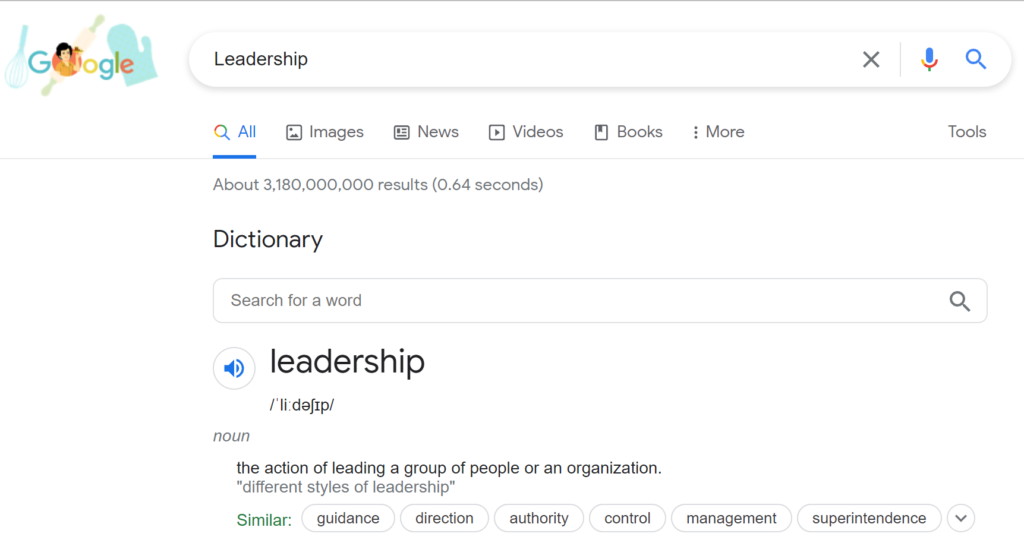Today, when I googled the word “leadership“, it gave me 3.18 billion results…
Pretty astonishing, right? It’s because it can get interpreted in many, many ways.

When we think about leadership, organizing, and management, it’s a very massive field with a lot of intertwining concepts and an enormous amount of ideas and truths about all this.
As James MacGregor Burns, an authority on leadership studies, once said – Leadership is one of the most observed and least understood phenomena on earth.
Over the years, I talked to many people leaders to gather their thoughts, understanding and interpretation of leadership and what it may mean to them and for their organisation. Although their ideas vastly differed, there were similarities and common themes.
With all those different ideas and notions about leadership, everyone commonly agreed that leadership is important. Everyone agreed that leadership isn’t the same as management or the use of power or authority – Leadership refers to something “different”. And therefore, it’s prudent to think about leadership in different ways and how to manage and organise.
It’s more about targeting the inside core of people – cognition, meaning, emotions, identity issues, and understanding expectations. It’s about influencing and how we relate to the world.
Management tends to focus on behaviours like:
- this is what you should do.
- and results, performances, and measurements.
- planning, structuring, surveillance, and control
When collating my thoughts and people’s options I gathered through interviews about leaders and their views on leadership, I saw ideas broadly falling under five broad categories
#1 Leaders with a vision of the future
These types of leaders have vision and charisma
They work to fulfil their prophecies, creating an ideal future and facilitating mind stretch and engagement.
They work with symbolic actions, expressions, and unconventional acts that make an impression on the people they lead.
With the use of rhetoric, communication narratives, stories, use of imagery – They make people really feel, Wow! In the best case, mesmerised, seduced by the vision.
These leaders occupy the centre stage, and when they talk, people around them listen and follow. Those strongly influenced followers, in turn, share the vision to create rapid progress towards the vision.
#2 Leaders with values and moral compass
These types of leaders may not necessarily have a clear and strong vision, they are guided by goodness and the greater good.
They are more inclined to work with morality and emphasise what’s good, i.e. the right values, morality, or ethics. They have a keen interest in being good and doing good.
These leaders are more like moral shepherds, encouraging people to do the right thing.
You may be thinking they only exist in NGOs, political organizations, and health care, or something laudable. But if you look closely into commerce and business, you may find examples of leadership that are centred around values and ideals.
Leaders should embody all of this– work with values and ideals, be authentic, honest, and trustworthy. People then develop loyalty and feel motivated by this type of leadership.
#3 Therapeutic Leader (The good listener)
They are relaxed and particularly good listeners, they hold themselves back and listen. These leaders care much about emotions and dealing with people’s feelings, stress, uncertainty, anxiety, et cetera.
You are much more attuned to people’s problems and difficulties, and their state of mind, and then also about their needs,
Good leadership starts here, emotional and social intelligence is especially important here. So, you proceed from people’s need to coaching and try a therapeutic approach.
#4 Feel Good Leaders
These types of leaders create a feel-good atmosphere. They walk around, meet, and make people feel good about the situation.
It’s not about individual needs and emotions. It’s more the general climate or atmosphere at the workplace. So, everybody should be involved. They should be included.
People should not feel outside. They should feel a part of the party, part of the community. And often, this is done during the workweek.
Ever seen a leader walking around on the floor, meeting and greeting people at times, asking how are you doing? trying to remember people’s situation, the cat or dog’s name or whatever. He is trying to have this friendly atmosphere where everybody feels included and part of the good community at the workplace.
So social activities are quite common, again to create this good atmosphere. And a lot of companies nowadays they’re quite good at this and emphasize this quite heavily.
(More on Happiness and Work in another video)
#5 Zen Master Leader – Coach & Trainer
Just like the Zen master, these types of leaders may not necessarily solve a problem and tell people what to do. Instead, they encourage people to think through and try to solve it themselves. And if the solution is not optimal, then perhaps accept that the key learning element.
They support people’s development, provide training, and build competencies. So educational activities, ongoing training, and the management of meaning are key aspects of the leader’s work as a Zen master.
They try to clarify what’s the meaning, what is the strategy and the path. They explain the mission, make people understand the work and improve the use of skills while building new capabilities.
When the problem is around or coming up, they enable people to see opportunities and possibilities.
Next time when you are at work, observe and notice what types of leaders are around you or what type of leaders you are yourself.
Also, as with all things when it comes to leadership, it’s very important– don’t overdo it or risk being like David Brent (Ricky Gervais) or Michael Scott (Steve Carell) from the popular TV shows The Office (UK and USA) respectively.
In the end, I will leave you this one thought:
“A leader’s job is not to do the work for others, it’s to help others figure out how to do it themselves, to get things done, and to succeed beyond what they thought possible.”
Simon Sinek
If you have not read my previous post on the leadership series, read here and see what it takes to be a good leader.
You may also be interested in learning more about leadership styles and theories
